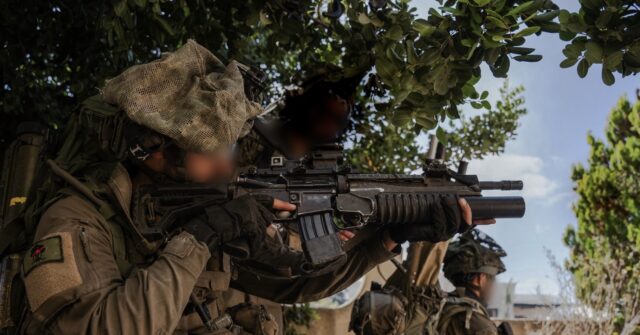The Israel Defense Forces (IDF) have intensified their military operations against Hezbollah terrorists in Lebanon with notable advancements reported on Thursday and Friday. Targeting both strategic outposts and key terrorist leaders, the IDF executed a significant airstrike in Beirut that aimed at Hashim Safi al-Din, who was identified as a prominent figure and potential successor to the recently killed Hezbollah leader, Hassan Nasrallah. Throughout this military engagement, the IDF has faced Hezbollah resistance in southern Lebanon, claiming to have inflicted substantial casualties on the terrorist group.
Within four days of sustained combat operations, the IDF reported the elimination of approximately 250 Hezbollah militants, which includes 20 of their commanders. The military’s focused approach commenced with localized ground raids based on precise intelligence, beginning earlier in the week. Contributions from various command divisions and fire support have collectively enhanced the effectiveness of the operations, leading to the loss of several company and platoon commanders among Hezbollah ranks.
The targeted operations are characterized by brigade-level engagements that combine aerial assaults with ground support from tanks and artillery, enabling IDF forces to dismantle Hezbollah’s fortified positions. These ground troops have made substantial headway in neutralizing terrorists hiding in urban facilities near the border, while also locating and dismantling significant weapon caches, including rocket launchers and explosives. The coordination of air and ground forces has allowed the IDF to conduct preventive strikes against Hezbollah military infrastructure during these engagements.
The efficiency of the IDF’s operations is underscored by the reported destruction of over 2,000 military targets that include personnel, infrastructure, weapon depots, and launchers. Despite the extensive offensive on Hezbollah, the IDF has faced its own casualties, reporting nine fatalities among its ranks in the ongoing hostilities in Lebanon. This balance of losses highlights the intensity of the conflict and the high stakes involved on both sides.
Additionally, the IDF’s campaign has expanded to include the exposure of a crucial 3.5-kilometer tunnel running beneath the Lebanon-Syria border. This tunnel was reportedly utilized by Hezbollah to procure weapons from Iran, indicating a level of strategic planning and resource allocation by Hezbollah that complicates military operations undertaken by Israel. The discovery of such supply routes points to the challenges faced by the IDF as it seeks to dismantle Hezbollah’s operational capabilities.
Discussions surrounding the military actions are framed within broader narratives surrounding security and regional stability, with various analysts observing the implications of the ongoing conflict. As events unfold, the insights of military and political commentators, such as Joel B. Pollak, help illustrate the complexities involved, including international alignments and the historical context of the Israeli-Hezbollah rivalry. The situation remains fluid, and the IDF’s continued operations aim to solidify control and ultimately secure a strategic advantage in the volatile landscape of Lebanese conflict.

